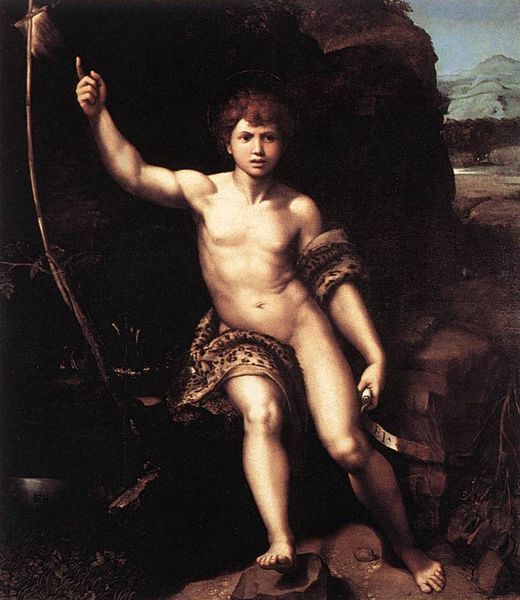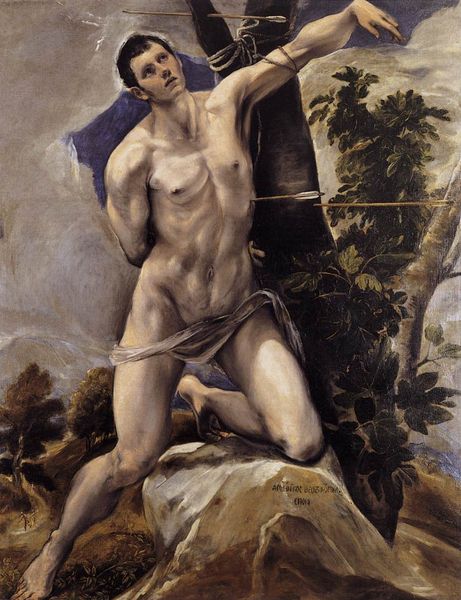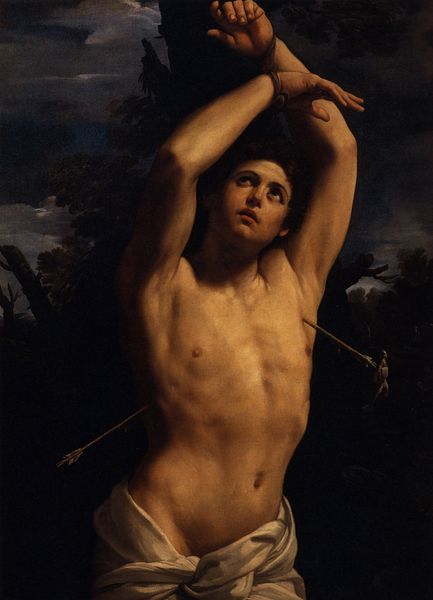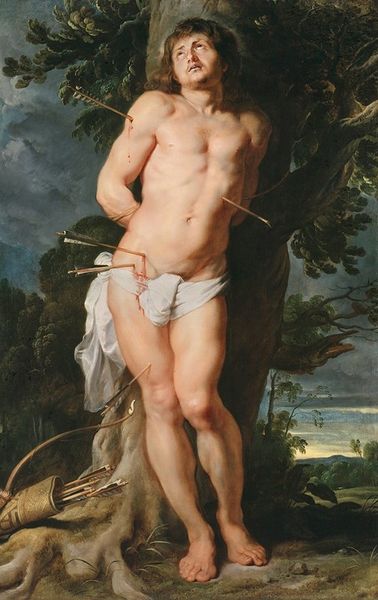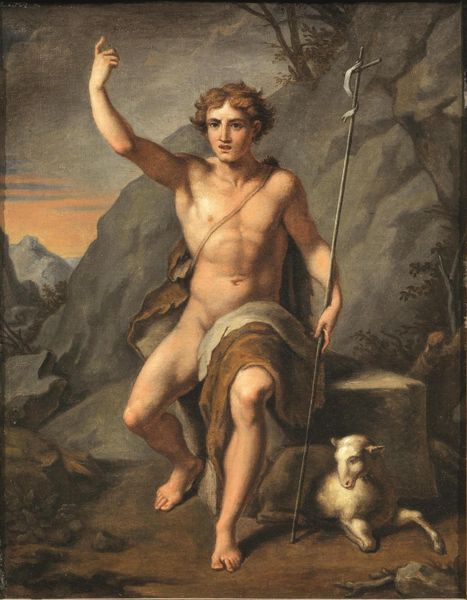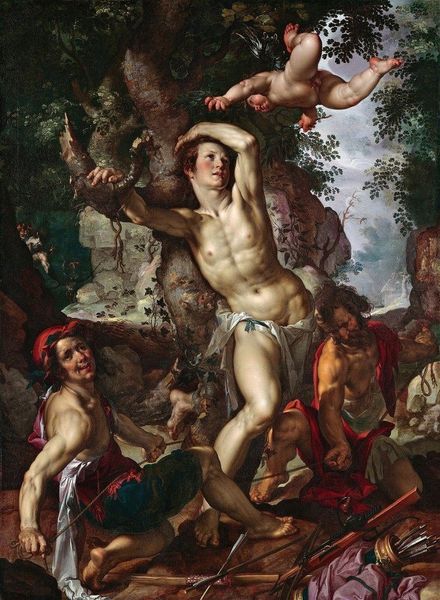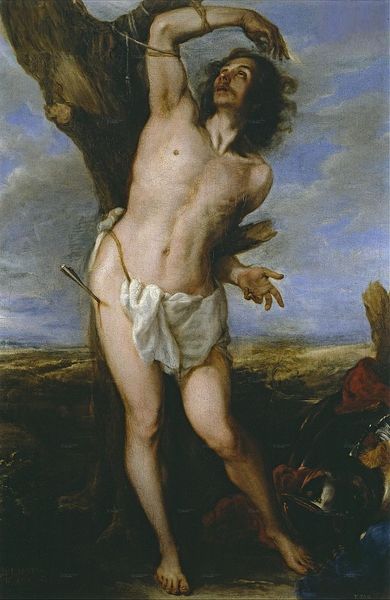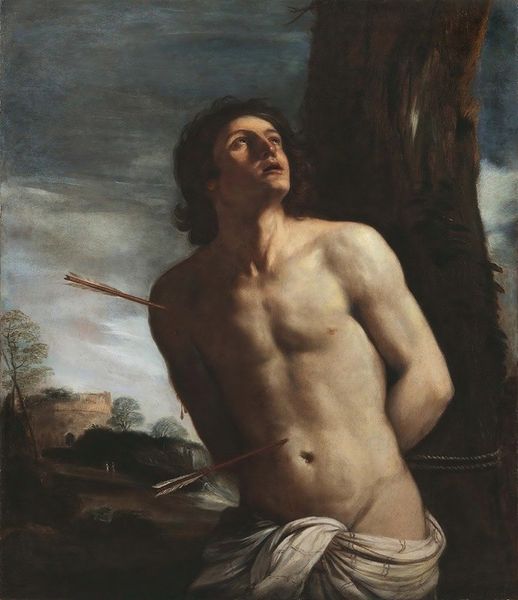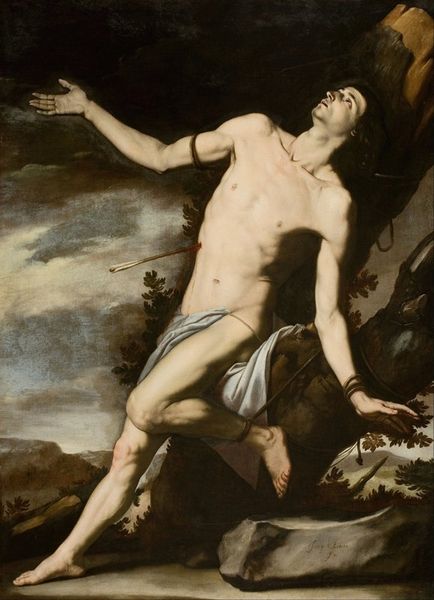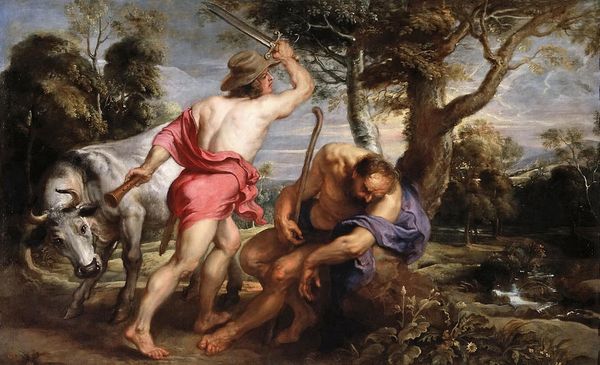
painting, oil-paint
portrait
baroque
painting
oil-paint
landscape
figuration
oil painting
chiaroscuro
history-painting
Copyright: Public Domain: Artvee
Curator: Right, let’s turn our attention to Guido Reni’s striking “St John the Baptist in the Wilderness,” dating from around 1636 to 1637. Editor: Well, he certainly grabs your attention! It's so dramatic; I immediately feel a mix of longing and slight discomfort looking at this, maybe it's his… intense gaze, I don’t know. Curator: It is compelling, isn’t it? Reni really plays with light and shadow, this wonderful chiaroscuro technique pulls John forward. The dynamism comes from that diagonal sweep of his body across the canvas and, of course, the gesture— the upturned arm. I wonder if he's hailing a cab? Editor: Ha! No, it’s a bit more significant than that, surely! It almost feels performative, like he's trying too hard to prove something with this pose and pointed index finger. Curator: You think so? For me, the figure communicates devotion. And what seems forced is carefully constructed; the asymmetry and almost studied casualness of his robe give it a realism. His holding a cruciform staff almost carelessly and seemingly looking at us from a far distance definitely indicates his important status in his own right but also points towards the destiny and greatness of Christ. The whole composition directs your gaze upwards. Editor: Hmm, a calculated 'effortlessness'. I can appreciate that. But let’s consider that little congregation he’s addressing, tiny figures clustered to the left – are they drawn in perspective? Feels more symbolic. Curator: Good point. I see the figures are meant to amplify John's message as they sit closely and are shrouded by a shadow compared to St. John The Baptist being bright, illuminated and the largest element in the picture. That scale throws off a kind of epic feeling… something larger is afoot in this forest. Editor: Indeed. Ultimately, this “St. John” encapsulates Baroque painting to me; the dramatic lighting, emotive figure, the landscape, even the dynamic tension. All point towards the miraculous and otherworldly. Curator: Nicely put. It’s a work that really lingers in the mind. Editor: I agree. After our conversation, I'm even seeing that studied 'effortlessness' with fresh eyes.
Comments
No comments
Be the first to comment and join the conversation on the ultimate creative platform.
